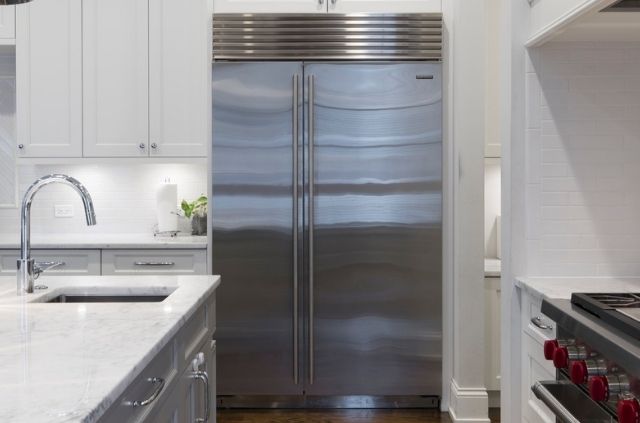Can Mold in Basement Affect Upstairs?
No homeowner wants to find mold in growing in their house. The substance is not only unsettling to discover, but mold can actually cause health risks for people living in close proximity. This brings us to the question of the day: can mold in the basement affect upstairs?
Mold found on the ground floor of your home can still make its way up to other areas of the house. The main reason is that mold spores get in the air and travel up through air vents and other openings in the floor. In this article you will learn how to effectively remove mold from a basement and keep it from coming back.
Spending Time in the Basement
A basement can be a variety of different places, depending on your house. It can be a play area for the kids, man cave, or even a home theater. However, sometimes the basement can turn into a dangerous place for you and your family members. I’m not trying to scare you, just know that mold should be taken seriously.
The truth is that mold is everywhere and you’re probably in close contact with it right now. But certain types of mold can be toxic and bring along health risks. If you are allergic to mold the side effects can be more evident, but for most people breathing in mold spores can eventually lead to respiratory problems.
How Mold Spores Can Travel
Even small amounts of mold in the basement can eventually make their way up to the attic of your house. But how does this even happen? If you have central air conditioning, mold spores can enter the air ducts and travel through each floor of the house. That means you could potentially be breathing in mold on the second floor.
But even if you don’t have central air conditioning mold will still affect the upstairs living areas. This occurs naturally, as warm air rises and brings the mold spores to higher sections of the house. No home is 100 percent sealed, which means that any small crack or hole in the floors will be a potential opening for mold to travel through.
Finding the Problem
Before starting the mold removal process you will need to identify where the mold is coming from. If you fail to follow this crucial step, the mold will reappear very quickly. Examine these locations inside and outside of your home to find the source of the problem.
Plumbing Fixtures
Mold can start growing from even the slightest bit of moisture. And unless you’re spilling water on a consistent basis, chances are you have a pipe leaking in the house. Examine all of the exposed plumbing fixtures in the basement to see if this is the issue. If your basement always has a puddle in the same spot, figure out where the water is coming from.
Gutters & Downspouts
Even mold found in your basement can be coming from a problem on the exterior of the house. Most of the time this is caused by poor drainage from clogged gutters and downspouts. Clean these areas of any leaves or pine needles, and make sure that there is enough space between where the water is coming out from the gutters and your house.
Moisture
Condensation typically develops in the basement when warm air comes in contact with the cold walls and floors. This will inevitably create moisture in the ground floor of your house and create an environment for mold to start growing. One way to prevent this from happening is to invest in a dehumidifier, which will take the moisture out of the air in the basement.
Common Spills
Any kind of mold that has been growing in the basement may have started from the floor above. Hardwood floors located on the first floor of the house can hold moisture that will transfer to the basement underneath. This is common when you spill water on the floor, because the wood can absorb even the slightest bit of liquid not cleaned up.
How to Remove Mold in Basement
- Safety First – Before starting the mold removal process, you will need to put on proper safety equipment. This includes rubber gloves, a face mask, safety glasses, and long clothing. Mold spores may get in the air when you’re cleaning and you want to make sure they don’t land on your skin. It’s also dangerous to breath any mold in for even a short period of time, which is why a respirator can help keep you safe.
- Use Vinegar – People often think that bleach is the best type of cleaning solution to get rid of mold. However, bleach contains water which can actually speed up the growth of mold. The mold might be gone for a few weeks, but if there’s a leftover amount of water from the bleach it will come back. Bleach is also harmful to breath in and you don’t want it getting on your skin. Go with vinegar for a safe and effective way to remove mold.
- Let it Dwell – It’s much easier to apply the vinegar mixture using a spray bottle. It doesn’t matter if the mold is on walls or the floor, you will need to generously spray it on all surfaces. Once the vinegar is sprayed on, let the mixture dwell for 5-10 minutes. This should give it enough time to soak into the mold. Keeping the mold wet during the cleaning process also prevents harmful mold spores from entering the air and reaching other areas.
- Agitate the Mold – Once the vinegar has allowed enough time to dwell, it’s time to remove the mold. Use a stiff bristle brush to agitate the mold off whatever surface you are working on. A long handle brush will be much easier on your back if the mold is on the floor. Follow horizontal and vertical motions to attack the mold from all angles. This will clear out the mold from any small porous surfaces typically found in cement.
- Clean the Area – Begin cleaning up your supplies when you have finished. If you’re finding it difficult to remove the mold, continue to spray the vinegar mixture and scrub away. If it has been sitting for a long time, it will require more work. Make sure to throw away any rubber gloves and disposable face masks you used. Wash your clothes and take a shower as soon as possible to avoid any mold spores from getting on other areas in the house.
Final Thoughts
Hopefully this article has offered you some closure knowing that mold in the basement can affect upstairs. It’s common for most houses to have mold – especially in dark and damp places like the basement. This type of organic growth can start from water caused by faulty plumbing, clogged gutters, and moisture.
Knowing how to identify and fix these problems is the most important step to keeping your family safe. Once you’ve successfully eliminated the cause of mold in your basement, follow it up by cleaning the mold. This will eliminate you from breathing in harmful mold spores that can travel through air vents and small cracks in the house.
Further Reading
Search Terms
- Can mold in basement affect upstairs?
- How to remove mold in basement






